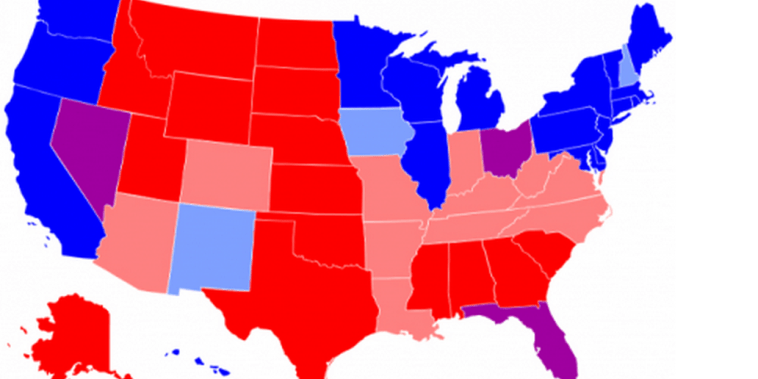If you do not currently live in a red state, you probably will soon. Either you will (1) flee your blue state to a red one, or (2) you and your fellow blue-state citizens will get so fed up with the high taxes and fiscal irresponsibility that you will vote out the blue-state politicians and replace them with red-staters.
Videos By Rare
U.S. Census data confirms that voters are leaving blue states for red ones. The top 10 destinations are North Carolina, South Carolina, Florida, Texas, Oklahoma, Colorado, Arizona, Nevada, North Dakota and Washington. Only one is a deep blue state, Washington.
The states people are fleeing: Connecticut, New Jersey, New York, Pennsylvania, Ohio, Michigan, Illinois, Kansas, New Mexico and California. Of those the only red state is Kansas.
As for the second point, just consider how many states have started making that shift to red-state politicians—or will start on Nov. 4.
There’s only 13 or 14 deep blue states: California, Oregon, Washington, Illinois, Massachusetts, New York, Maryland, New Jersey, Connecticut, Rhode Island, Vermont, New Mexico and Hawaii.
New Jersey and New Mexico both have very popular Republican governors. It looks like Massachusetts will elect a Republican governor, and it’s possible in Hawaii. And the fed-up citizens of the worst fiscally run state in the country, Illinois—the president’s home state and the one that has most embraced his governing philosophy—may also wake up Nov. 5 with Republican governor.
Blue-leaning Michigan and Wisconsin elected Republican governors in 2010, and they may be back for round two. Maine and Pennsylvania are more questionable.
And it’s not just individuals, business owners are also considering their options. The Tax Foundation recently released its “2015 State Business Tax Climate Index.” It found the 10 best states are Wyoming, South Dakota, Nevada, Alaska, Florida, Montana, New Hampshire, Indiana, Utah and Texas. All of them except New Hampshire are red or red leaning. Eight of the 10 have Republican governors.
The 10 worst states are Iowa, Connecticut, Wisconsin, Ohio, Rhode Island, Vermont, Minnesota, California, New York and New Jersey. Eight are blue or blue leaning, Ohio and Iowa are purple, and six of the 10 are run by Democrats.
Are you detecting a pattern?
Now, turning a blue or purple state red doesn’t necessarily mean electing Republicans, though that’s the usual pattern. I’m referring more to a governing philosophy. Democrats who call for lower taxes and smaller government—and then actually govern that way—are essentially embracing the red-state philosophy.
There is one problem, however. As the New York Times recently pointed out, some Americans fleeing their blue states for a red one haven’t abandoned their blue-state philosophy, and so they vote for politicians who espouse the very policies that drove them from their last state. I have long thought that the reason Virginia has turned from red to purple is that liberal Marylanders fed up with that state moved to northern Virginia for the better tax and business climate—and then still vote blue.
Voters around the country are concluding “it’s better to be red than dead”—applying a whole new, and much better, meaning to an old phrase. That pattern will likely continue Nov. 4.

